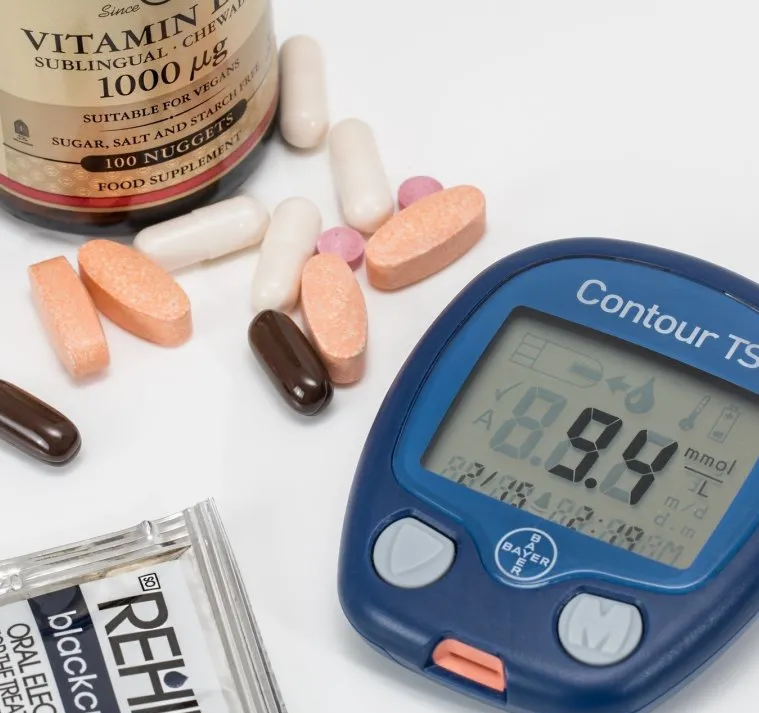Do you have friends and family with diabetes around you?
The national epidemiological survey from 2015 to 2017 has a statistical estimate of the total number of diabetes patients in China at 130 million. If you count diabetes and prediabetes, nearly half of adults have abnormal blood sugar! Moreover, the total prevalence of diabetes in mainland China has maintained a continuously increasing trend, and there is no platform or inflection point.

When diabetics pay attention to blood vessels, they should take into account cancer prevention
People who know diabetes know that diabetics are prone to vascular-related problems, such as coronary heart disease, diabetic foot, diabetic eye disease, etc., but few people know that diabetes can greatly increase the risk of cancer.
Data from a trial of 16,492 patients with type 2 diabetes mellitus [1]:
- In the 2.1 years followed up, a total of 798 patients died. Among the factors that cause death, the first is cardiovascular disease, and the second is malignancy.
Special attention is paid to the prevention of breast and liver cancer
Recently, a study published in the sub-journal Lancet followed more than 15,000 Chinese diabetics for more than three years and obtained the following results[2]:
- Patients with diabetes mellitus have an increased risk of systemic cancer (except prostate cancer) by 1.5 to 2 times;
- People with diabetes with high blood glucose fluctuations or obesity have a higher risk of cancer and death;
- Obese patients with large blood glucose fluctuations increased the risk of breast cancer and liver cancer by 1.63 times compared with patients who were not obese and had stable blood sugar.
How to judge the high blood sugar fluctuations and obesity?
Blood sugar fluctuations
The variability score (HVS) of glycosylated hemoglobin (HbA1c) was used to assess the degree of blood glucose fluctuations.
The clinically recommended blood glucose fluctuation range is that the postprandial blood glucose is preferably no more than 2.2mmol/L than preprandial blood glucose, and the difference between the highest blood glucose and the lowest blood glucose in a day is not more than 4.4mmol/L.
corpulent
In the above study, body mass index (BMI = body weight÷ height 2) ≥ 25 kg/m2 were used as the diagnostic criteria for obesity.
The normal value of BMI used clinically is 20 to 25, more than 25 is overweight, and more than 30 is obese. For people with diabetes, a BMI greater than 25 is more dangerous.
The reality is that about 1/4 of all people with diabetes are at high risk of being both obese and having large blood sugar fluctuations.
Diabetics can do two things well, which can effectively fight cancer
Controlling blood sugar and weight can really reduce the risk of cancer and death, so high-risk groups must do a good job of personal health management.
Pay attention to blood sugar fluctuations
Most people with diabetes lower their blood sugar by taking medication on time and controlling their sugar intake, but tend to overlook preprandial and postprandial blood glucose fluctuations or the value of blood glucose fluctuations within a day.
Some patients even experience overcorrection, with too little blood sugar drop leading to too much blood sugar fluctuations.
Control weight
Most diabetics will experience "first thin and then fat", because in the early stages of the disease, high blood sugar in the body will cause accelerated breakdown of fat, resulting in weight loss; while most type 2 diabetics will appear overweight and obese.
Here, Beijing oncologist Yu Jiajun recommends that all patients choose and insist on doing the exercise that suits them, and control the BMI of BMI between 20 and 25.
bibliography
[1] Cavallari I, et al. Causes and Risk Factors for Death in Diabetes: A Competing-Risk Analysis From the SAVOR-TIMI 53 Trial. J Am Coll Cardiol. 2021 Apr 13;77(14):1837-1840.
[2] Mao D, et al. Risk associations of long-term HbA1c variability and obesity on cancer events and cancer-specific death in 15,286 patients with diabetes - A prospective cohort study. Lancet Reg Health West Pac. 2021 Nov 12;18:100315.